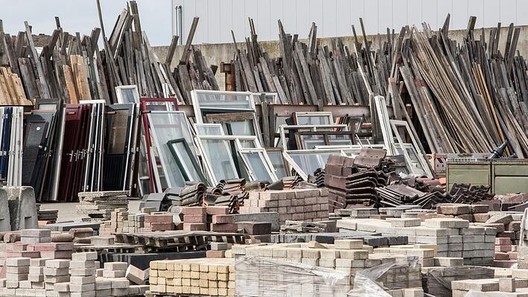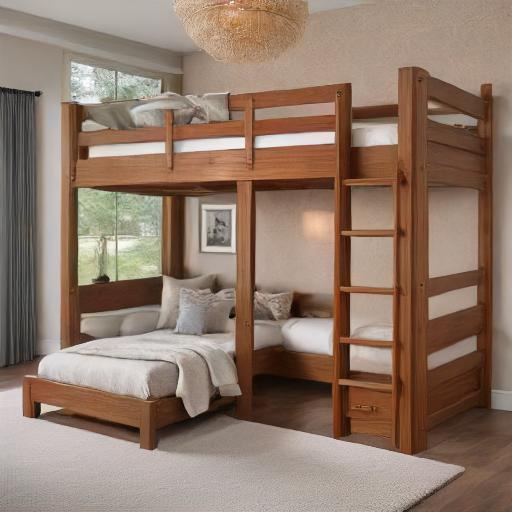Uncovering the Hidden Treasures: A Guide to Architectural Salvage
Architectural salvage, the practice of recovering and reusing building materials from demolished or renovated structures, has gained increasing popularity in recent years. This sustainable approach not only diverts valuable materials from landfills but also preserves the architectural heritage of our communities.
Architectural salvage yards are treasure troves of unique and often irreplaceable materials, including reclaimed wood, vintage hardware, decorative moldings, and stained glass windows. These elements can add character and charm to new construction or renovation projects, creating spaces that are both aesthetically pleasing and environmentally conscious.
One of the primary benefits of architectural salvage is its environmental impact. By reusing materials, we reduce the demand for new resources and minimize waste. Additionally, salvaged materials often have a lower carbon footprint than their modern counterparts, as they have already been manufactured and transported.
Furthermore, architectural salvage plays a vital role in preserving our architectural heritage. By incorporating salvaged materials into new projects, we can connect with the past and honor the craftsmanship of previous generations. These materials can tell stories about the history of our communities and add a sense of authenticity to contemporary designs.
However, it is important to note that architectural salvage can also present challenges. Finding the right materials for a specific project can be time-consuming, and the condition of salvaged materials can vary widely. It is essential to carefully inspect materials before purchasing them and to work with experienced professionals who can assess their suitability for reuse.
Despite these challenges, the benefits of architectural salvage far outweigh the drawbacks. By embracing this sustainable and heritage-preserving practice, we can create beautiful and unique spaces while reducing our environmental impact and honoring the past.
In conclusion, architectural salvage is a valuable resource for architects, designers, and homeowners alike. By reusing materials from demolished or renovated structures, we can create sustainable and aesthetically pleasing spaces while preserving our architectural heritage. As the demand for sustainable building practices continues to grow, architectural salvage is poised to play an increasingly important role in the future of design and construction.
Breathing New Life into History: Creative Uses for Architectural Salvage
Architectural salvage, the practice of recovering and reusing building materials from demolished or renovated structures, has gained increasing popularity in recent years. This sustainable and cost-effective approach not only preserves historical elements but also breathes new life into old materials, creating unique and characterful spaces.
From reclaimed wood beams to ornate stained glass windows, architectural salvage offers a vast array of materials that can be repurposed for various applications. Old bricks, for instance, can be used to create charming garden walls or rustic fireplaces, while salvaged tiles can add a touch of vintage elegance to kitchens and bathrooms.
One of the most striking examples of architectural salvage is the use of reclaimed wood. With its rich patina and unique grain patterns, reclaimed wood adds warmth and character to any space. It can be used for flooring, wall paneling, or even furniture, creating a sense of history and authenticity.
Architectural salvage also extends to metalwork, such as wrought iron gates, railings, and chandeliers. These elements can add a touch of industrial chic to modern interiors or complement the historical charm of older buildings. By incorporating salvaged metalwork, designers can create spaces that seamlessly blend the past and present.
In addition to its aesthetic appeal, architectural salvage is also an environmentally friendly practice. By reusing old materials, we reduce the demand for new resources and minimize waste. Furthermore, salvaged materials often have a lower carbon footprint than their modern counterparts, making them a sustainable choice for eco-conscious homeowners and designers.
However, it is important to note that architectural salvage requires careful planning and execution. Materials must be inspected for damage or structural issues, and proper installation techniques must be employed to ensure safety and longevity. Additionally, the availability of salvaged materials can vary depending on the region and the specific items sought.
Despite these considerations, architectural salvage remains a valuable resource for architects, designers, and homeowners alike. By embracing the beauty and history of old materials, we can create spaces that are both unique and sustainable, preserving the past while breathing new life into the present.
Sustainable Style: Incorporating Architectural Salvage into Modern Design
Architectural Salvage: Giving New Life to Old Materials
In the realm of sustainable design, architectural salvage has emerged as a captivating trend, offering a unique blend of history, aesthetics, and environmental consciousness. By repurposing discarded building materials, architects and designers are not only reducing waste but also infusing modern spaces with a timeless charm.
Architectural salvage encompasses a wide array of materials, from reclaimed wood and antique hardware to vintage tiles and stained glass. These elements, once destined for landfills, are meticulously salvaged from demolished buildings or historic renovations. By giving them a second life, we not only preserve their inherent beauty but also reduce the demand for newly manufactured materials.
Incorporating architectural salvage into modern design requires a keen eye for detail and an appreciation for the patina of time. Reclaimed wood, with its rich grain and weathered texture, adds warmth and character to contemporary interiors. Antique hardware, such as ornate doorknobs and hinges, provides a touch of elegance and authenticity. Vintage tiles, with their intricate patterns and faded hues, create stunning backsplashes and accent walls.
Beyond its aesthetic appeal, architectural salvage also offers practical benefits. Reclaimed wood is often more durable than new lumber, having withstood the test of time. Antique hardware is typically made from high-quality materials, ensuring longevity and functionality. Vintage tiles are often more resistant to wear and tear than modern counterparts.
Furthermore, architectural salvage promotes sustainability by reducing the environmental impact of construction. By reusing existing materials, we conserve natural resources, reduce greenhouse gas emissions, and minimize waste. Additionally, the preservation of historic materials contributes to the cultural heritage of our communities.
Incorporating architectural salvage into modern design is not without its challenges. Sourcing suitable materials can be time-consuming and requires a network of contacts. The condition of salvaged materials can vary, and some may require restoration or repair. However, the rewards of creating unique and sustainable spaces far outweigh the challenges.
As the demand for sustainable design continues to grow, architectural salvage is poised to play an increasingly significant role. By giving new life to old materials, we not only create beautiful and environmentally conscious spaces but also preserve our architectural heritage for generations to come.




